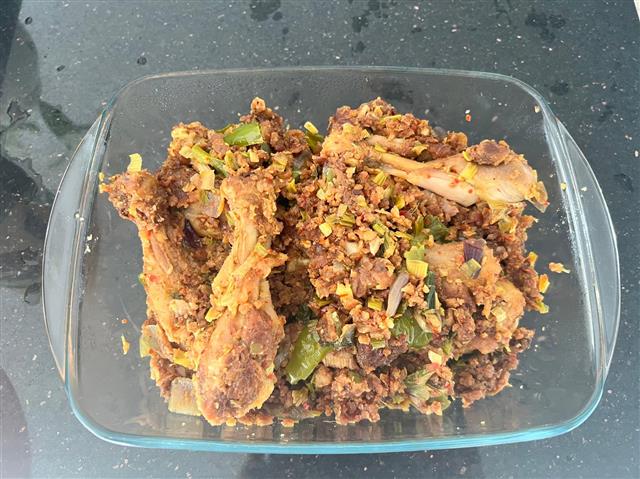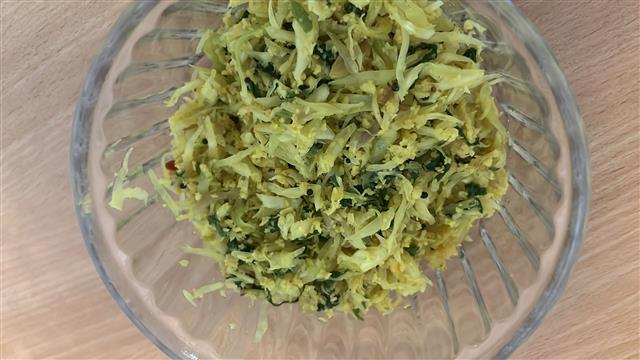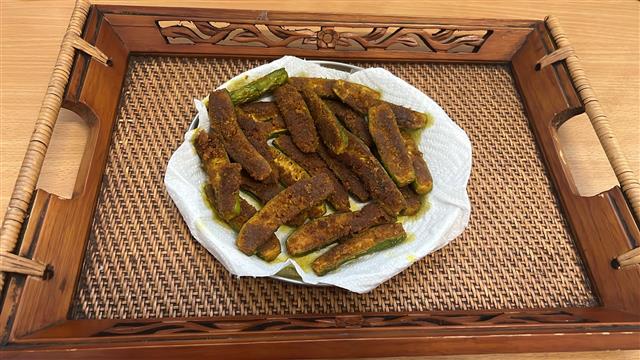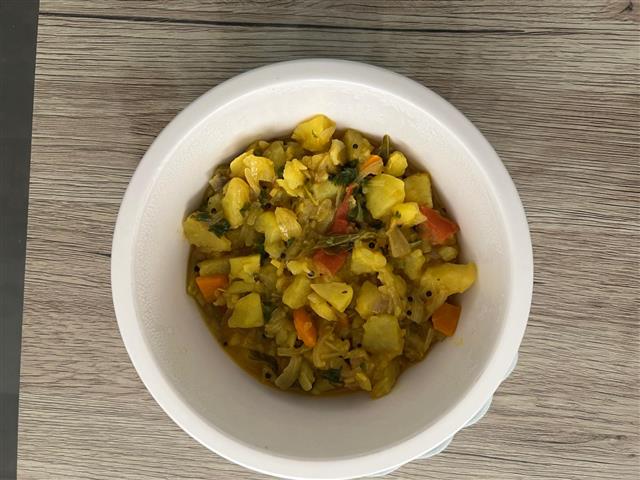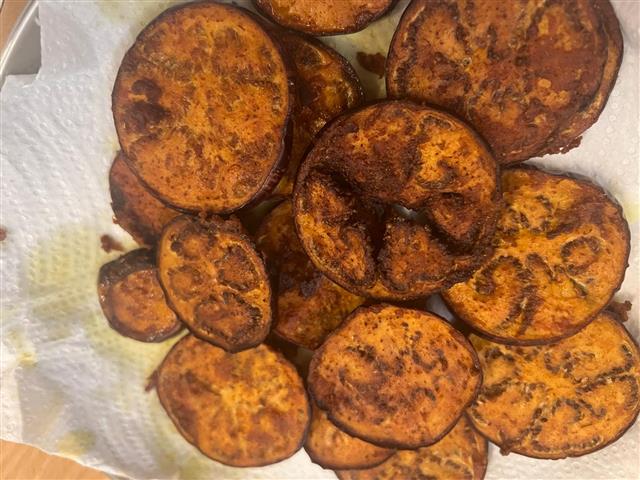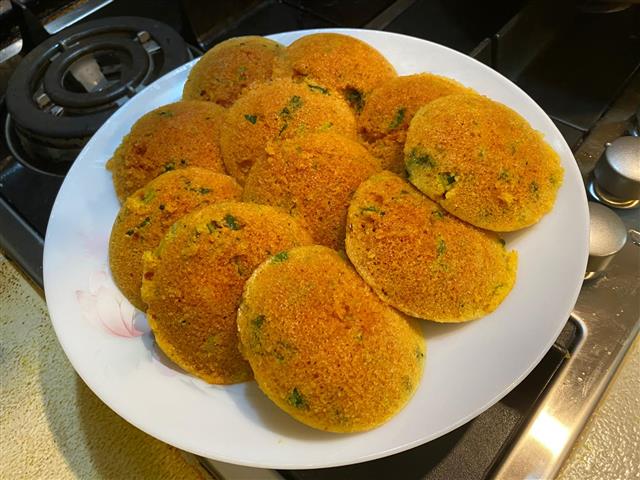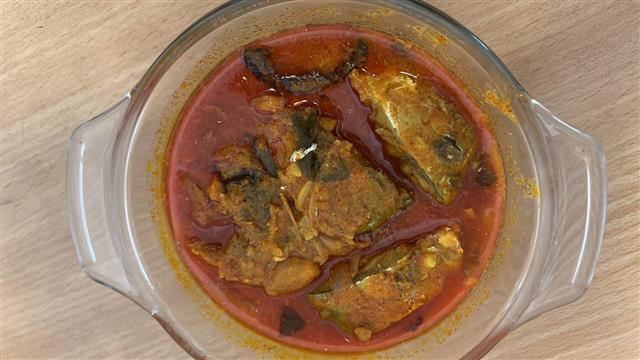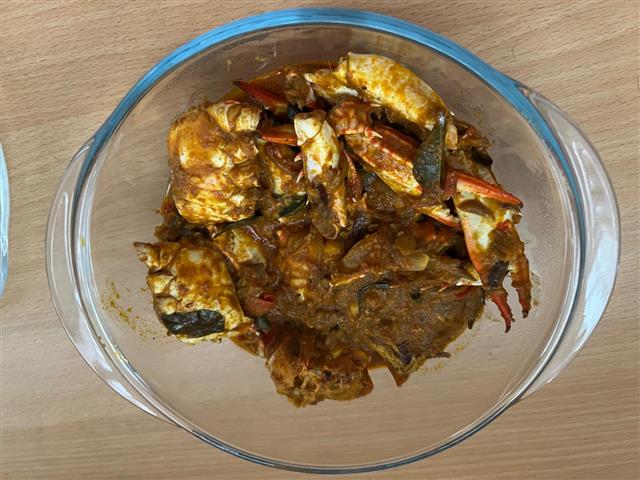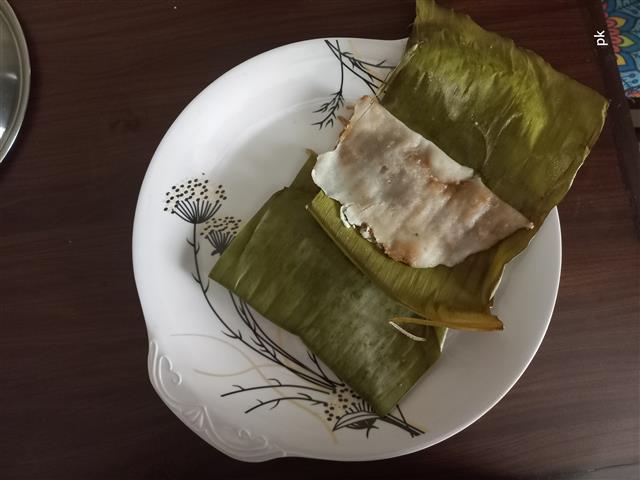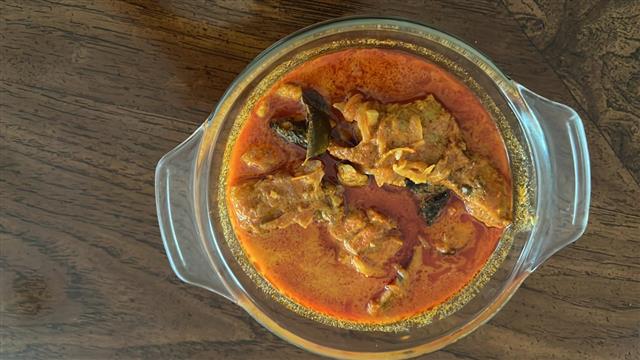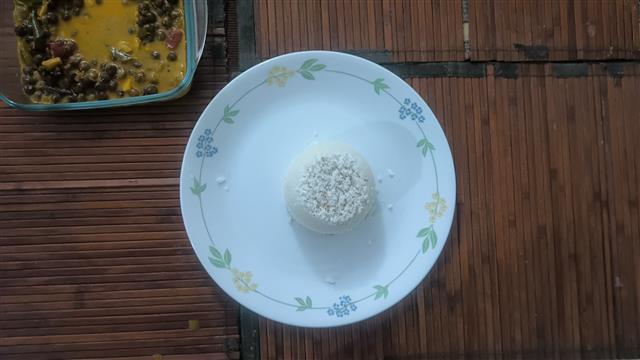
Fish Biriyani
(4 reviews)
An elegant biryani layered with flaky fish, spiced ghee rice, caramelised onions, fresh herbs, and warming Indian spices.
Kerala-style Fish Biryani is a lighter, more fragrant alternative to its meatier cousins. The spices are gentle and aromatic. The rice is fragrant, and each grain is infused with ghee and whole spices. The fish is delicately spiced and pan-fried until golden, and melts in your mouth.
A celebration of the sea, this dish is as much about community meals as it is about culinary heritage. Every spoonful carries the salty sweetness of the coast, tempered by slow-cooked masalas and fresh herbs.
Ingredients
Directions
- Wash and soak the rice for 20 minutes. Rinse and make ghee rice. Heat oil and ghee in a frying pan.
- Add the whole spices. Saute for a minute on low heat. Add the rice and saute for 2 to 3 minutes.
- Cook it with 1 teaspoon salt, 1 teaspoon lemon juice and water for 15 minutes, until cooked but with a bite.
- In the meantime, clean the fish and prepare the marinade. Add 1/2 teaspoon turmeric, chilli powder, lemon juice and salt to a bowl and mix well.
- Spread the marinade masala on both sides of the fish and let it rest for 15 to 20 minutes.
- Pan-fry the fish in oil for 2 to 3 minutes on both sides, and set aside.
- Heat one tablespoon of oil in a pan. Add cumin seeds and ginger-garlic paste. Add chopped onions with 1 teaspoon turmeric and garam masala. Add chopped tomatoes and saute well for 5 minutes.
- Layer the Biryani: Add a layer of cooked rice followed by a layer of fish. Repeat with another layer of rice and fish.
- Top with remaining rice, coriander and mint leaves, and close with a lid. Cook in a dum-style for 15 to 20 minutes.
Cooking Tips
• Use firm, boneless fish like seer (neymeen), pomfret, kingfish, or pearl spot fillets. Avoid delicate fish that break or fish with bones.
• Soak the ghee rice before cooking it to keep it fluffy and with separate grains
• Shallow fry the fish in batches to cook it well.
• Go easy on the garam masala, as too much can overpower the dish.
Marination Tips
• Add the spices for the marinade, along with salt and lemon juice, to a bowl.
• Spread the mixture on both sides of the fish pieces.
• Let the fish soak in the marinade for 15 to 20 minutes.
How to Serve
• Serve garnished with crispy fried onions and roasted cashews
• With raita or pachadi
• With pappadam or pickle
• With morum vellam (spiced buttermilk)
The Story Behind Fish Biriyani
Fish Biryani is the culmination of the many influences on Keral cuisine, including Arab and Persian traders who provided their recipes. The native cooks adapted biryani by adding local spices and the easily available fish.
In many Malabar homes, fish biryani is the choice for Friday or weekend lunch when beef or chicken are deemed heavy and laborious to prepare.. In my childhood, it was the dish that was usually prepared during celebrations or family gatherings, as an occasional week meal, not a regular food.
Unlike the rich, slow-cooked mutton or beef biryani, this one is lighter on the stomach, quicker to make, while tasting just as delicious.
I prefer to use seer fish or pomfret and prepare each element separately. The rice is pan-fried in ghee (like the Chinese fried rice). I make fresh biryani masala at home with whole spices and powders (although you can use store-bought in a pinch). The masala is slowly browned on low-medium flame, and the onions caramelised to taste sweet and crispy, while I shallow-fry the fish until just crisp.
Once layered, it is left to cook under a dum (a heavy lid comes in handy to trap the heat and create steam). This is the trick to get the aromas to mingle and turn an everyday bunch of ingredients into something magical.
To this day, the scent of fried fish with herbs and garam masala reminds me of that old biryani pot and the anticipation of Sunday lunch.
What Is Kerala Fish Biryani?
Kerala Fish Biryani combines ghee rice and spiced fish in alternating layers. Unlike North Indian biryanis, this version does not use yogurt or cashew paste in the marinade and is less oily. The fish is not steamed or boiled but fried separately and added during layering.
The ghee rice, sometimes called Neychoru, is lightly flavoured with whole spices, fried in ghee and oil, and cooked with lemon juice and salt. The masala is sautéed onions, tomato, ginger-garlic, more spices, and the final touch of garam masala. Herbs like mint and coriander add freshness. The tasty crispiness comes from the steaming process (dum) when all the elements come together into one aromatic and satisfying dish.
Regional Variations While Kerala-style fish biryani is known for its fragrant ghee rice, separate layering, and moderate spicing, other southern states have often more rustic styles.
In Tamil Nadu, fish biryani is typically prepared in a one-pot style using seeraga samba rice. The fish is cooked directly in the masala, resulting in a deeper flavour.
Andhra-style or Hyderabadi-style fish biryani tends to be spicier, featuring generous amounts of green chillies, garam masala, and coriander powder.
Karnataka's coastal regions prefer coconut-based masalas, lending their fish biryanis a creamier texture and sweetness. Mangalorean fish biriyani is more tangy with coconut and tamarind in the masala.
In the Maharashtrian Konkan style, the biryani with kokum and local spices is sour and slightly smoky.
Each version reflects its local ingredients and palate, but Kerala's biryani stands out for its aromatic restraint, separate frying of fish, and the gentle layering of rice, masala, and herbs.
This fish biryani is a celebration of Kerala's seafood and its assimilating culinary heritage. .
The reward? A plate that smells of home, tastes of tradition, and satisfies in the most flavourful way possible.
Pro Tips for Perfect Results
→ Marinate the fish before frying. This helps the flavour stick.
→ Fry the fish until just golden on the outside. Over-frying will make it dry and tough.
→ Caramelise the onion slowly. Let them brown slowly to bring out their sweetness.
→ Use fresh fish and herbs. Dried herbs and frozen fish won't give the same texture or tang.
→ Layer with a light hand. Avoid pressing the rice and fish together, or the biryani could turn mushy.
Fish Biriyani Variations
- With Coconut Milk
For a creamier base, add a splash of thick coconut milk to the masala before layering.
- Thattukada Style
Spicier and more rustic—add crushed peppercorns and green chillies. Skip the dum and serve directly after layering.
- With Roasted Coconut Masala
Some regions roast grated coconut with fennel, cumin, and cinnamon, then grind it to a paste and stir it into the masala.
- Fish Fry on the Side
Instead of layering fish within the biryani, some serve a crispy fish fry on top as garnish.
- With cashew and fried onion garnish
For a richer dish, fry more onions with cashews and top the biryani with them.
- With cashew paste and curd
For a creamier and mellow dish, add cashew paste and curd while cooking the onions and tomatoes.
Diet-Friendly adaptations
Vegetarian and Vegan
Add paneer or tofu and vegetables like beans, carrot, potatoes and cauliflower.
Low-fat
Reduce the amount of ghee and oil while cooking rice and the final biryani. Roast or grill the fish instead of pan-frying it to reduce the oil.
Storing & Reheating Tips
→ Fridge: Store leftovers in an airtight container. Keeps well for up to 2 days.
→ Reheat: Sprinkle a few teaspoons of water and warm on a low flame, covered with a lid.
Tip: Avoid microwaving, as the rice dries out and fish may turn rubbery.
→ Freeze: Not recommended, as the rice becomes brittle and the fish loses texture upon thawing.
Tip: Always serve hot. Cold fish biryani loses its delicate aroma and soft texture
Common Mistakes to Avoid
→ Overcooking the Fish: Overdone fish becomes dry and unappetising.
→ Too Much Water in Rice: Use the right water ratio to keep the rice fluffy and grains from sticking to each other.
→ Skipping the Dum Step: This final steaming allows all the flavours to blend.
→ Too Much Spice: Too much garam masala or cumin can overpower the fish.
Frequently Asked Questions
- Can I use frozen fish?
Yes, but thaw completely and pat dry before frying. Fresh fish is ideal for flavour and texture.
- Can I substitute with basmati rice?
Absolutely. Jeerakasala or kaima rice is often preferred in Kerala-style biryani for its short grains and aroma. Use medium-grain basmati if you can't find this rice variety.
- Is this biryani spicy?
It's moderately spiced. You can tone it down by reducing the chilli powder and adding more onion.
- Can I add eggs or paneer?
Yes, boiled eggs sliced in half or pan-fried paneer and tofu add protein.
- Can I bake in the oven?
Definitely! Cover the dish with foil and bake at 170C°C for 20 minutes.
- Can I make it in the pressure cooker?
Avoid as the biryani will turn mushy.
Equipment Needed
→ Heavy-Bottomed Pot or Kadai for making ghee rice
→ Flat Frying Pan to shallow fry the fish
→ Wide Spoon or Slotted Spoon for layering
→ Lid or Damp Cloth to seal in the steam during final cooking
→ Bowls for mixing the marinade masala, and for soaking rice
